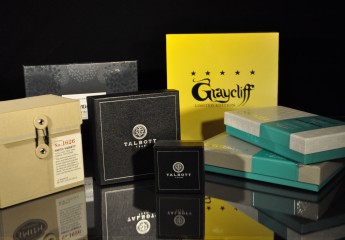As You Sow, a sizable organization that works “to promote environmental and social corporate responsibility…” recently ran a report on the packaging industry’s overall performance in regards to sustainability and packaging. Their Waste and Opportunity 2015 analyzed the practices of several large companies and found that to varying degrees, they all “…are wasting valuable materials through poor packaging sustainability policies – to the tune of $11.4 billion a year.” Many of these companies do not take responsibility for their actions, either, as they are not only wasting valuable materials, but are also greatly contributing to pollution.
As You Sow’s report analyzed 47 major companies based on four core practices of sustainability, ranking them on their overall performance:
- Source Reduction: using less materials and switching to those which are reusable if the option is available.
- Recycled Content: using recycled content when creating new products, which they point out “…helps create a market for recycled materials and requires far fewer resources.
- Recyclability and Materials Use: avoidance of materials that cannot be recycled easily.
- Boosting Materials Recycling: when possible, make it easier for consumers to recycle products after use (this more so applies to brands which have established storefronts, where they can have designated recycling bins).
According to the Environmental Protection Agency’s Municipal Solid Waste Generation, Recycling, and Disposal in the United States from 2012, some types of packaging materials are better than others. Recovery rates for plastics are extremely low–only 13.8% of these materials are recycled. Glass and aluminum are also moderately poor, at 34.1% and 38%, respectively. Paper and paperboard products ranked the highest, at 76.1%, though they note that these rates are skewed “…primarily due to high recycling rates for corrugated cardboard; only 25 percent of all other types of paper packaging is recycled.” Steel packaging does moderately well: 72.2% of these materials are able to be recovered.
As You Sow highlights how their core practices of sustainability can be put into use in both the fast food restaurant and consumer packaged goods markets, and gives examples for each:
For fast food restaurants, reusable cups and dining-ware should be available (like at Panera and Starbucks). Use of recycled content should be maximized (Starbucks and McDonald’s), and companies should entirely avoid materials that are difficult to recycle (like the foam cups from Chick-fil-A).
As for consumer packaged goods, more reusable and bulk options should be made available, and goals should be set to increase the use of recycled content (PepsiCo is off to a good start, while Coca-Cola is lagging behind). Companies should also be designing packaging that is easy to recycle: Capri Sun is a very common bad example in this department.
In their 5 key actions brands must take to drive packaging sustainability, As You Sow points out that brands should be disclosing their production information on the creation of packaging that we don’t have very much information on (like plastic pouches), stating simply that “what gets measured can get managed.” They also note that “some companies generate millions in revenue recycling corrugated cardboard,” and brands who do not already should be capitalizing on this. Lastly, if companies do feel the need to be using materials that are hard to recycle, they should be working with processors “…to develop new, cost-effective recycling processes to ensure they are recycled. All brands need to fund new investments in materials market development…”
As You Sow says it best: “It’s time for companies to step up and take the lead on recycling.”





